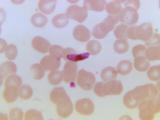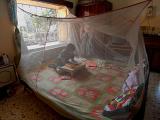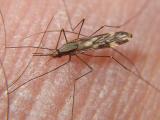Unprecedented progress against malaria—a key public health achievement over the past few years—has stalled, and an estimated 5 million more cases were reported in 2016 than the year before, according to the World Health Organization's (WHO's) annual report today on the status of the battle against the disease.
One of the major problems is insufficient funding at domestic and international levels, which has led to major gaps in providing insecticide-treated nets, medications, and other malaria-fighting tools, according to the 196-page report.
Pedro Alonso, MD, PhD, director of the WHO's Global Malaria Program, said in a WHO press release, "We are at a crossroads in the response to malaria. We hope this report serves as a wake-up call for the global health community."
One of the main goals in the global strategy for malaria is to reduce illnesses and deaths by at least 40% by 2020, and according to the new report, the world is not on track to reach critical milestones. WHO Director-General Tedros Adhanom Ghebreyesus, PhD, who goes by Tedros, said, "Without urgent action, we risk going backwards, and missing the global malaria targets for 2020 and beyond."
Funding gaps
Investments in global malaria control and elimination for 2016 totaled an estimated $2.7 billion, well below the $6.5 billion needed annually by 2020 to meet 2030 targets of the WHO global malaria strategy, the WHO said.
Governments in endemic countries provided $800 million, making up 31% of funding last year. The United States remained the largest international donor to malaria control programs, providing $1 billion—38% of all malaria funding. Other major donors included the United Kingdom, France, Germany, and Japan.
Disease killed 445,000 in 2016
For 2016, the WHO estimates there were 216 million malaria cases from 91 countries, up from 211 million cases in 2015. The disease killed about 445,000 people in 2016, about the same as the year before, according to the latest findings.
The rates of new cases had been falling, but have leveled off since 2014, with infections increasing in some of parts of the world, such as the Americas. And fatalities followed a similar pattern. African countries still report 90% of all malaria cases and deaths, while 15 countries, all but one in sub-Saharan Africa, bear 80% of the global burden. Nigeria (27%) had the highest proportion of global cases, followed by the Democratic Republic of Congo (10%), India (6%), and Mozambique (4%).
For Plasmodium vivax malaria, the WHO estimates that, for 2016, just five countries accounted for 85% of the cases: Afghanistan, Ethiopia, India, Indonesia, and Pakistan.
"Clearly, if we are to get the malaria response back on track, supporting the most heavily affected countries in the African Region must be the primary focus," Tedros said.
Mixed news for control strategies
In sub-Saharan Africa in 2016, the WHO estimated 54% people at risk for malaria slept under an insecticide-treated bednet (ITN), compared with 30% in 2010. Though the rate of ITN coverage has increased, the rate has slowed since 2014.
Indoor insecticide spraying of walls, another powerful tool to prevent the disease, showed a steep drop, from an estimated 180 million people in 2010 to 100 million in 2016, with the largest reductions in the African region, the report said.
One bright spot is a major increase in diagnostic testing in public health settings, where 87% of suspected case-patients were tested in 2016, compared with 36% in 2010. A strong majority (70%) of people who sought treatment received artemisinin-based combination therapies, the gold standard.
Many areas, however, still have low access to public health systems, according to the WHO. For example, country surveys in the African region reveal that only about one third of children with a fever are taken to a medical provider in public health sectors.
Conflict, crises compound challenges
Among other challenges in battling malaria, conflict and crises pose additional risks and complicate the response to the disease in Nigeria, South Sudan, Venezuela, and Yemen, where the WHO is currently supporting response efforts.
For example, in Nigeria's Borno state, the WHO launched a mass antimalarial drug campaign that reached an estimated 1.2 million children. And early reports suggest that malaria cases and deaths there have declines as a result.
Aside from the lack of sustainable and steady funding, other challenges include shifts in climate patterns, the emergence of parasite resistance to antimalarial medications, and mosquito resistance to insecticides, the report notes.
See also:
Nov 29 WHO press release
Nov 29 WHO world malaria report




















